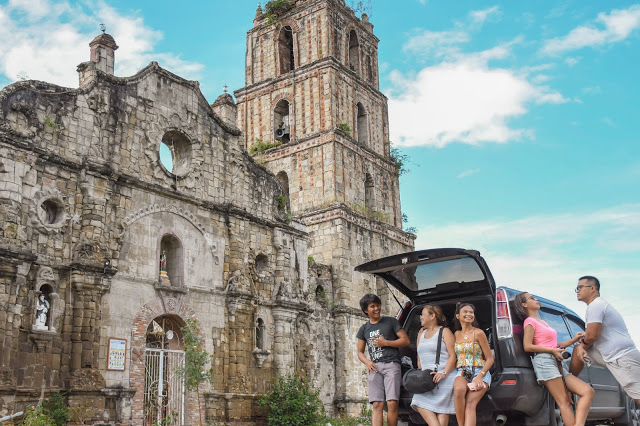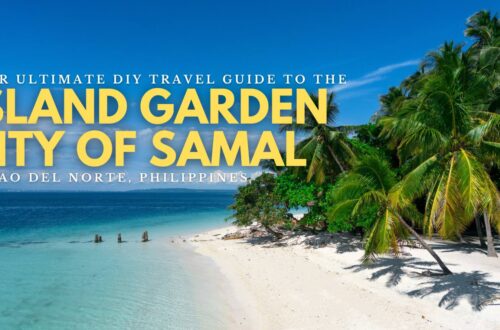ISABELA PROVINCE TRAVEL GUIDE 2024
Seated at the plains amidst the seemingly unending ranges of the north, Isabela province is actually a home to a lot of off-the-beaten path destinations in the country. With great efforts and a desire to introduce its hidden gems to the world, roads and trails have been started and opened to make these attractions accessible. Apart from the undiscovered natural wonders in its outskirts, the province also boasts a lot of historical, religious and cultural heritages that interestingly tell stories from the past that would make you know and understand Isabela even more.
About Isabela
Isabela province is situated at the northwest side of mainland Luzon belonging to the second region of the country, the Cagayan Valley Region. It is characterized by vast plains, mostly rice and cornfields, landlocked by the provinces of Cagayan, Ifugao-Kalinga and Quirino-Aurora; surrounded by the mountain ranges of the Cordillera and Sierra Madre. The longest river in the country, Cagayan River, flows through the province, too. Though locked by the mountains, Isabela is also a home to a number of undiscovered majestic waterfalls and pristine beaches at the northwest coast, in Palanan. It used to be difficult to travel to the town since a charter plane has to be taken but the construction of roads have been started making it somehow accessible to many.
Philippine Peso is the mainly accepted currency in the province. Most transactions are in cash basis and only few establishments (i.e. malls, shops and restaurants) would accept debit and credit cards. There are money changers and ATMs around especially at the city and town centers.
Language Spoken
Languages that are spoken at large in Isabela are Ybanag and Ilocano. People could converse fluently in Tagalog and in English, though. Some of the Ybanag words that you might want to use are, “Mabbalo” which means “Thank you”, “Etta kumang” or “Ta kumang” meaning “Let’s eat”, “Mabising nga” meaning “I’m hungry”. These words would lead you to trying the most famous dish in Isabela which is Pancit Cabagan.
Must-try Food in Isabela
Pancit Cabagan
 |
| A plate of special Pancit Cabagan from Kikay’s Panciteria. This costs Php 85.00! |
Pancit Cabagan is the banner dish and a must-try in Isabela. It is a tasty and saucy noodle dish topped with boiled eggs (quail or sliced chicken eggs), strips and slices of onion, bell pepper, cabbage and crunchy pork meat. The best that I have ever tried so far are the ones from Josie’s and Kikay’s Panciteria in Cabagan, Isabela.
Binalay

|
| Photo by the Promdi Chic Blog by April Nunez |
Binalay or Binallay is a traditional Ybanag delicacy usually served during Lenten season to get people through the fasting period. It is a rice cake made of a steamed mixture of powdered glutinous rice and water wrapped in banana leaves. It is usually served with sweet brown coconut sauce. It can be enjoyed best when partnered with brewed coffee.
Bambanti Festival
 |
| Photo from The Jerny Travels and Inspiration |
Isabela Province is also a home to Bambanti Festival. Bambanti is an Ilocano word which means scarecrow. This festival recognizes the farmers and what they are actually contributing to their families and to the community through their hard work. It is celebrated annually, every third week of January. Everyone from all over the world is welcome to join the different activities and watch the street dancers in different costumes as they move and grove to an upbeat music.
Places to Visit
St. Paul the Apostle Church
St. Paul the Apostle Church is a Roman Catholic Church (locally known as San Pablo Church). It is located in San Pablo, Cabagan, Isabela. Built in 1624, it is known to be the oldest church in the province of Isabela. its bell tower is also considered to be the tallest in the Cagayan Valley. It is some eight to ten-minute drive from the town center and can be reached though a tricycle.
The ruins of the facade and the bell tower are the only ones that have remained intact though it has been partially reconstructed. Behind the facade is a newly built small church.
St. Matthias Church or the Church of Tumauini
In its historical marker:
First built of light materials by Fray Francisco Nunez, O. P. and dedicated to the patron Saint San Matias, 1707. Separated from Cabagan and became a regular parish in 1751. The church of stone with a unique cylindrical bell tower, the only of its kind in the Philippines was constructed by Father Domingo Forto, 1783 and completed, 1805. Became the capital of Isabela for sometime in 1880’s. Partly damaged during World War II and repaired into its original form by the faithful of Tumauini.
By virtue of Presidential decree no. 260, 1 August 1973, as amended by Executive Order Nos. 1505, 11 June 1978. This church was declared a national historical landmark, 24 February 1989.
Biggest Butaka in the World
Butaka is a Tagalog term for wooden rocking chair. The biggest one in the world (as per Guinness Book of World Record) is found at Ilagan, Isabela; beside the national highway.
The giant butaka is 11 feet-tall, 9.7 feet wide and 20.8 feet long fixture which weighs 2,368 Kilograms. It was said to be built for 29 days out of 1,762 feet Narra. It was said that an amount of Php 175,000.00 was spend for the project.
 |
| The wooden chair during our visit on October 2017 |
Ilagan Japanese War Tunnel
Isabela also suffered in the hands of the Japanese Imperial Forces during the Japanese Occupation. After several years, the wounds of the vicious past healed but never forgotten. One of the living reminders of these vicissitudes is the Japanese War Tunnel found in Ilagan that has been restored and open to public. You can get a taste of the Japanese traditional culture and learn about interesting facts abut the Japanese Occupation in the country especially in the city of Ilagan.
Read more about Japanese War Tunnel here: A Ttip Down to Isabela Province’s Memory Lane: The Japanese War Tunnel
 |
| You can also wear Japanese Kimono for only Php 50.00 and get your hair propped up like that of the Japanese women’s |
Getting to, Around and Away
Getting to
By Air:
1. Fly from Manila to Tuguegarao City, Cagayan. Cebu Pacific Air have several flights daily to and from Tuguegarao City. The flight takes an hour.
2. From Tuguegarao Airport, make your way to the city center.
3. Take a van or bus bound for Manila and get off Cabagan, Tumauini or Ilagan, Isabela. Tuguegarao to Cabagan takes an hour, an hour and a half to Tumauini and two hours to Ilagan City.
By Land:
From Manila via NLEX, SCTEX and TPLEX
1. Take a bus from Kamias in Cubao or Sampaloc, Manila bound for Tuguegarao City. Bus liners such as Five Star, Baliwag, First North Luzon, Victory Liner and Florida have several trips daily to the province. Fare ranges from Php 700.00 to Php 1,000.00++ (for Florida sleeper bus) depending on the type of bus you’d take. Trip may take 11 to 12 hours. If traveling by land, the best time to leave is at 9:00 PM to 10:00 PM.
2. Alight at either Ilagan, Tumauini or Cabagan.
From Quirino Province
1. From Maddela, take a van or bus going to Santiago City. Trip takes one and a half hour to two.
2. Santiago City is actually part of Isabela. From Santiago City, take a van or bus bound for your desired destination in the other towns of the province.
Getting Around
Main means of transportation in the province include buses, shuttle vans, tricycles and kalesa (horse-pulled carriage) in Cabagan. It is quite easy to be commuting around as you can either take the van or bus to and from these towns and the points of interests are just a tricycle away.
Getting Away
In getting away, there’s not much of a problem when traveling to Isabela on a non-peak season as you can resort to being a chance passenger when traveling by land. However, it is still highly suggested that you book your trips especially on your return to the Metro. Make sure as well to be at the pick up-drop off point of the buses on time.
 |
| This carousel is permanently installed at the middle of Cabagan Square Park |
Sample One-Day Isabela Itinerary
DAY 0:
10:00 PM – Departure
DAY 1:
9:00 AM – Arrival at Ilagan, Isabela
9:10 AM – Queen Isabela Park
9:30 AM – Giant Butaka
9:45 AM – Ilagan Japanese War Tunnel
12:00 NN – Lunch
1:00 PM – Departure for Tumauini, Isabela
1:45 PM – Arrival at Tumauini, Isabela
2:00 PM – Tumauini Church
3:00 PM – Departure for Cabagan, Isabela
4:00 PM – Arrival at San Pablo
4:15 PM – San Pablo Church
5:30 PM – Cabagan Town Proper (Early Dinner)
7:00 PM – Cabagan Square Park
There are other places to visit in the province such as rivers and waterfalls not mentioned in this Isabela Province Travel Guide. However, the trip may require a day since it involves a little trekking, too, and of course, to fully appreciate and enjoy the place. Apart from these, attractions at the nearby provinces can also be explored such as Callao Cave in Penablanca, Cagayan and Landingan Viewpoint in Nagtipunan, Quirino Province.











3 Comments
Ledovina Romero
How shall we book for a tour?
Bri analyn T. Jose
I like it its my province and its all true mabbalo
LEDOVINA ROMERO
Anne Elizabeth Gumiran
Hi, Ma’am Ledovina. There’s not much of organized tours in Isabela that I know of. Nevertheless, it’s easy to go around epsecially if you intent to visit the tourist spots I included in the itinerary 🙂 You may rent a van or haggle a tricycle that you may use to go around shall you decide to opt for a more convenient way.